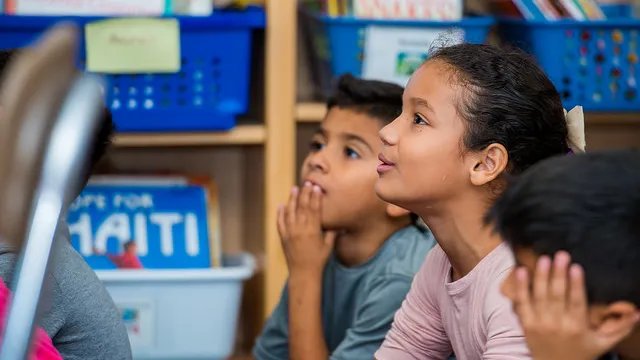Teaching with Videos Helps English Learners Grasp Language & Content


Teaching with Videos Helps English Learners Grasp Language & Content
Language development can be an intimidating concept for some classroom teachers. I know this from personal experience, and also because studies show that the information available to teachers on the matter is inconsistent and insufficient. When I was an ELL teacher, I would occasionally overhear a teacher comment on the work I did with our shared students. I would often hear a teacher say “I can’t possibly teach that way since I haven’t had any training” or “I don’t have enough time to plan and differentiate instruction.”
I always assured these teachers that language development isn’t something “magical” or beyond their capabilities. All teachers are language teachers, and I used our collaboration time to share some important shifts in instruction that would maximize students’ language learning through content. One of those shifts is to activate and build background, which I wrote about in my last blog. Let’s dig a little deeper and look at a specific strategy for building background by using demonstrations and visuals in the form of videos.
Students usually love videos! But really, who doesn’t? As a teacher, I appreciated the power of a good video, whether it was a 3 minute clip or a full 30 minute segment. The great thing about using videos in the classroom is that you are able to preview them and plan for the language and content. I like to think of videos as “controlled” language and content, which is very important for English language learners. Videos are full of visual supports and you can even personalize learning by assigning students different videos.
So what exactly is the best way to use videos in your classroom with your ELLs? Here are some tips:
1. Always preview videos before showing them to your students.
It goes without saying that you should always watch a video--from start to end--before sharing it with your students. I find it important to reinforce this point as I have learned the hard way and personally experienced a video becoming too complex for my students. And, of course, you want to avoid showing anything inappropriate for school!
2. Build background knowledge before, during and after.
While you’re previewing the video, look for any background building that may need to take place. Take a few moments to connect with students’ prior experiences. If you perceive that there might be a learning gap, think of how you can fill it prior to showing the video.
3. Share objectives so students understand the purpose.
Prepare your students for the video by connecting it to the day’s learning and content objectives. Make sure you explain the connection and objectives both verbally and in writing.
4. Show the video in shorter clips.
Best practices often suggest that new language is most effectively taught in small chunks. The same rule applies when teaching language through videos. For younger students, a 3-5 minute video clip is sufficient while 7-10 minute clips are better for older students. Make sure you build in time for discussion, even if it’s a quick turn and talk.
One of my favorite student activities is something I like to call Double Vision Video. Not to be confused with Foreigner’s hit song from the 80s, this double vision video exercise is an activity where students view the same video clip twice. Here’s how it works: Play the video first with the sound muted so students can take in the visuals and content without having to navigate the language. Give students the opportunity to interact and do a quick “turn and talk” after the video. Then, show it again with sound.
5. Get students writing with this Graphic Organizer.
Maximize your instruction and students’ output by activating their writing domain. By having students jot down some text during or immediately after each viewing you will be able to gauge their understanding. Also it’s a great scaffold for those turn-and-talks, and will serve as a great review later on! Use this graphic organizer for students to record notes during both viewings.
Never underestimate the impact that a video can make. In fact, I recently used this powerful video at the Ellevation retreat last week to reinforce the importance of the work we’re doing to serve educators who are working with ELLs everyday.
Here are some of my favorite places to find student educational videos:
- Brainpop Jr. and Brainpop - only some are free, but they are definitely worth browsing and aligning with your content.
- National Geographic Kids - for elementary students
- National Geographic Videos - for secondary students
- PBS Learning Media
- TeacherTube
- WatchKnowLearn
Do you have any other resources for high quality educational videos? Or, any other tips for using them in your classroom? Please share below!